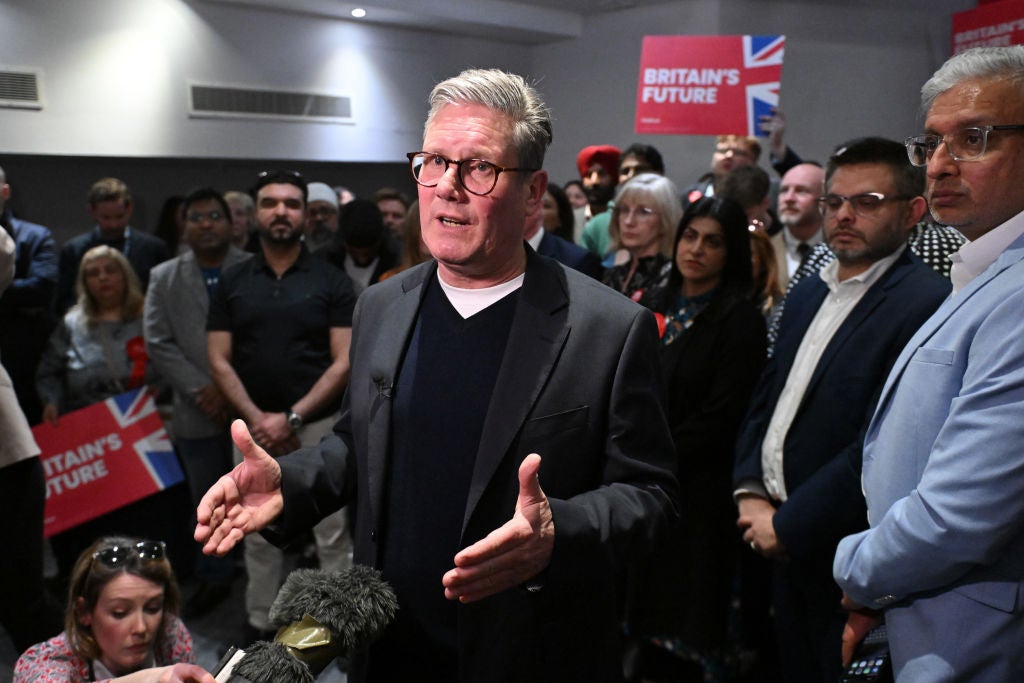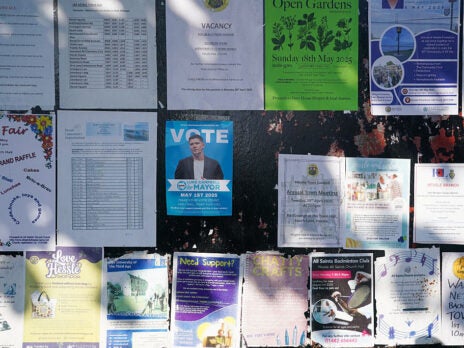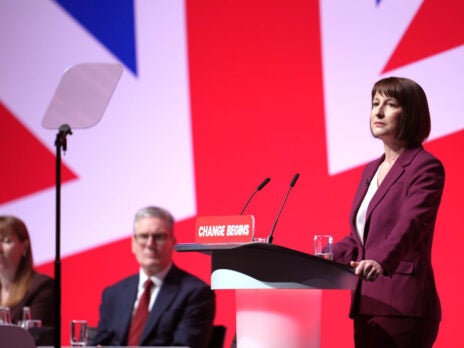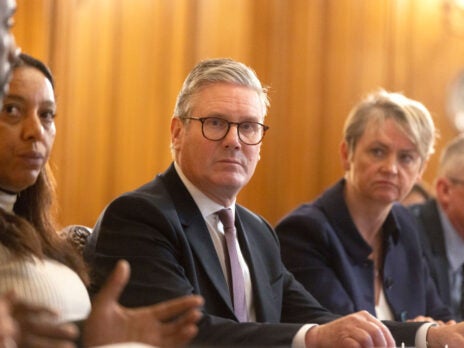
The local elections have been and gone – the last major test of public opinion before the UK general election due either later this year… or January 2025. So did the results live up to expectations?
In their projection for Sky News, professors Colin Rallings and Michael Thrasher suggested that a hung parliament would result if these results were repeated at a general election (with Labour on just 34 per cent of the vote and the Conservatives on 27 per cent). But as it seems, the only body in business to have collated all of the votes that took place, I’m afraid I have to disagree quite strongly. The results validate the polls, putting Labour on course to win upwards of 400 seats in the House of Commons.
But as always, and especially so in this case, there are some significant caveats. If Keir Starmer was driving a car – let’s call it the New Labourghini – the scores of amber lights flashing up on the screen should give anyone pause for thought.
Our forecast model for the 2024 local elections anticipated up to 500 council seat losses for the Conservatives (a near halving of support). Labour was projected to achieve almost 300 net gains, while the Liberal Democrats and the Greens were expected to gain almost 129 respectively.
The Conservatives’ losses ended up being in line with what we expected, a reflection of the party’s apocalyptic poll ratings. We forecast 478 net losses; they ended up losing 474. Labour, meanwhile, underperformed. Instead of the 273 gains we projected, it could only amass 186 – nearly 100 off the forecast figure.
Who filled in the gaps? The Greens and “the others”. The former outperformed our forecast by 22 seats, but independents and smaller parties (including George Galloway’s Workers Party of Britain) outperformed it by 86.
This is not normal. And it wasn’t expected when you glanced at previous local election results. Scores of independent gains blunted Labour’s advance. And, yes, they happened disproportionately in wards in the north and middle of England with large Muslim populations.
Pro-Palestine candidates, some endorsed by Galloway himself, almost swept the board in Blackburn proper – all while Labour was doing the same in the whiter wards of Darwen.
While Labour added the outer Leeds suburbs of Guiseley and Horsforth to its column of councillors, it was suffering shock losses in Headingley, which has a high proportion of Muslims, to pro-Palestine Greens.
In Bradford, too, the central wards fell to independents. In Manningham, once safe-as-houses Labour, an independent candidate came from nowhere to take 77 per cent of the vote to Labour’s 17 per cent – a drop of 61 points for the incumbents.
There are too many instances like this to dismiss them as isolated. The backlash, I would note, appears greater in scale than in 2003-04. While Labour advanced against the Conservatives this year, it fell back in safe seats. But had that not happened – had independent and Green candidates not gained Labour seats with high Muslim populations then our forecast would have been almost spot on and a clear reflection of the polls (which point not just to a Labour majority but to a Labour landslide).
Labour underperformed in terms of overall seat numbers. That’s in part because a disproportionate number of the seats are more urban than the average and more Muslim than the average. A lot of the independent gains were in safe Labour seats. But not all. So does it matter?
When you look at select Conservative constituencies, seats which saw council elections held in the vast majority of the constituency area and cross-reference them to our general election forecast and what happened in the local elections on 2 May, you find an admittedly mixed picture.
Take Bury South. The seat on the new boundaries went Tory in 2019 by two points – a marginal by any metric. The Britain Predicts forecast right now is a Labour gain (by 22 points). Once you add up the wards which make up Bury South, we find a Labour lead in the region of 30 points. Bury North, meanwhile, is forecast a Labour gain (also by 22 points) but the local election results showed Labour only leading in the seat by seven points.
Flick through the table and you find multiple instances of Labour overperforming and underperforming. Now, in some cases, not all of the constituency had a poll to go to. But I’ve used the following filter: if 70 per cent of the wards that make up the seat were up for election then we have a half-decent indicator. Take these figures with that in mind.
There are some seats that are almost a comical mirror image of our general election forecast. Rugby should go Labour in a general election by eight points. The local election results, despite a significant Lib Dem vote, found a Labour lead of seven points.
Colchester: Labour gain by seven points (general election forecast). The local election result? Labour ahead by seven points.
Aldershot: a dead heat under our Britain Predicts model. The local election results, however, point to a Labour advantage of eight points.
And now for the other seats. Peterborough – Labour should be winning here comfortably. But amid gains for the independents and Greens, it is the Tories who still – just – lead the popular vote here.
Keighley and Ilkley, in West Yorkshire, should be going Labour by 24 points at the next election. But once you tot up all the votes, the Conservatives still lead Labour in the seat albeit by four percentage points.
The Spen and Rother Valley, both forecast to go Labour at the next election by 15 and 12 points respectively, each show leads for the Conservatives over Labour.
There are, admittedly, plenty of the seats in which Keir Starmer’s party underperformed that can either be explained by a split left-wing vote (such as in Gloucester) or an insurgency of independent candidates. Take Burnley – Labour gains in the whiter southern half of the seat but suffers losses in the more Muslims northern half, so much so that once you add up all the votes it’s independent candidates who top the poll.
There are, however, one or two seats that can’t be explained away. While Labour did gain in the Rother Valley, this wasn’t overwhelming and the Conservatives still led the way overall.
When you consider that some of Labour’s underperformance is in Tory seats, rather than safe Labour ones, you should steer clear of the view that Labour’s losses among Muslim voters are confined to the latter. The Spenborough Valley is one such instance – a much-needed marginal for Labour.
How do we read these findings? It’s complicated. By and large, Labour is winning where it needs to. Great Grimsby and Rugby are two contender seats to get Labour over the line for a majority if we assume Britain Predicts is right. And in both the party leads quite convincingly. It would be wrong to suggest that split votes in more marginal seats upend the forecast that Labour is on course for a convincing majority.
While it may blunt it, local elections are not the same as general elections. But nevertheless, that the concentrated backlash against Labour is happening not only in safe seats but denying the party votes in Tory marginals should be warning enough that not everything is going quite right for Keir Starmer’s Labour Party.


